MARKET OVERVIEW
The global mechanical cylinder locks market will break down barriers historically linked with security hardware by developing in ways that reach far beyond mere mechanical capabilities. As this market further diversifies, it will start to have a greater impact on industries that were once not linked with traditional lock systems. Historically rooted in residential, commercial, and institutional infrastructure, the mechanical cylinder lock has been considered a fundamental device for protecting physical space for many years. Its future, however, will most likely be one of greater integration with surrounding technologies and systems that focus not only on security, but also control, user experience, and regulatory compliance.
In the years ahead, the global mechanical cylinder locks market will see its products become integral to larger architectural and urban planning discussions. Designers and architects are beginning to reenvision access solutions, not merely as operational hardware, but as elements that affect user engagement with environments. While building codes and construction regulations evolve worldwide, mechanical lock systems will have to perform to increasingly specialized standards, such as sustainability measures and universal design standards. This will translate to changes in manufacturing methods and materials used, pushing the industry in the direction of green and precision-based methodologies.
An interesting development will take place in the legal and compliance frameworks of these lock systems. Mechanical locks, though traditionally deemed low-tech, will come under growing examination under data privacy laws, particularly institutional or high-traffic settings. Industry and government organizations may impose new regulations pertaining to mechanical access control, compelling manufacturers to certify products through new compliance mechanisms. The developments will not be spurred by technology alone but by necessity as insurance companies, municipalities, and corporate interests insist on greater management of all security installations.
The application of mechanical cylinder locks in developing markets is another aspect that will reshape the role of this market. Urbanization patterns in Africa, Southeast Asia, and parts of Latin America will accelerate the interest in affordable, long-lasting security solutions. However, these very regions will not merely follow old products. Rather, they will insist on locks that are designed for the conditions of their infrastructure, cultural ethos, and maintenance resources. This creates space for regional partnerships and design localization, something the global mechanical cylinder locks market has not heretofore pursued.
At the same time, mechanical locking systems will start to find their way into non-traditional industries like smart agriculture, outdoor utility management, and even public art installations, where heavy-duty and non-digital locking systems can provide unique benefits. These deployments are not necessarily commercial drivers in the short term but will realign the industry's thinking about the use cases of its products. While these new stories emerge, there will be investment in inter-sectorial research to create models appropriate for hybrid use cases where stability, reliability, and robustness to environmental stress are more important than connectivity.
Therefore, the global mechanical cylinder locks market will no longer be limited to its traditional functions. It will change by crossing over design, legislation, geography, and innovation in ways that are yet to be imagined. This forward progress will not be a reinvention but a redefinition of purpose, so that mechanical cylinder locks can meet emerging needs in an evolving world.
Global mechanical cylinder locks market is estimated to reach $4,151.2 Million by 2032; growing at a CAGR of 4.5% from 2025 to 2032.
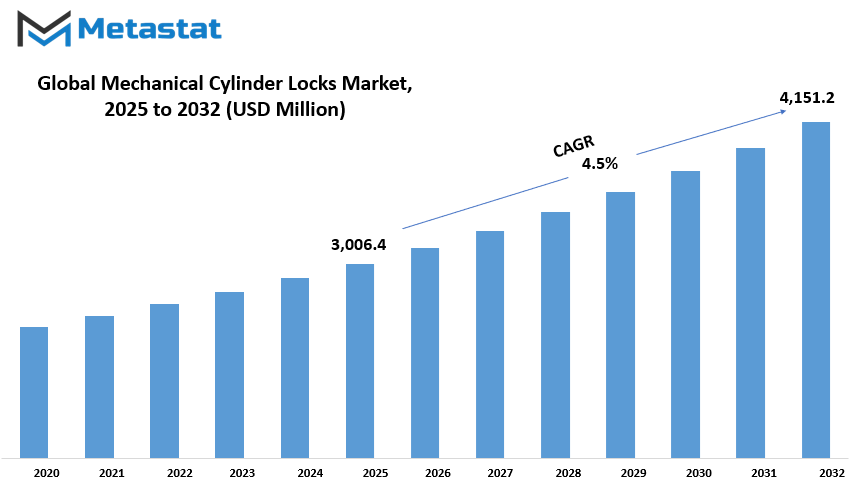
GROWTH FACTORS
The global mechanical cylinder locks market is witnessing consistent growth with the increased demand for modern home and office locking systems. As individuals become increasingly security-conscious, particularly for residential and business premises, they prefer spending money on secure locking mechanisms. Mechanical cylinder locks, as they are durable and simple to handle, are the favorite of a majority of homeowners and businesspeople. The increased construction work on the residential side as well as the commercial side is also supporting the market. With more buildings being constructed, there will always be demand for simple but effective security items, and mechanical locks are still one of the major defenses.
While these locks are accepted throughout the world, the market is not without any problems. One of the primary challenges is the increased popularity of electronic and smart lock systems. The new alternatives come with benefits such as remote access and mobile app compatibility that are preferred by technology users. Mechanic locks are thus under intense competition, particularly in urban centers where smart devices are increasingly becoming the norm. Another issue is the susceptibility of conventional locks to techniques such as lock-picking and forced opening. This is a source of concern in the customers' minds as to whether mechanical locks can sufficiently safeguard their property in the current environment.
Despite such apprehensions, there are positive prospects that could propel the market towards growth. One of the most significant areas with firm potential is the need for high-security mechanical locks for critical infrastructure. Power generation plants, governmental buildings, and transportation infrastructure require secure and tamper-evident locking devices. For this purpose, mechanical locks are normally preferred because they are independent of electronics and continue to operate in power failure situations or even hostile environments. The increasing focus on high-performance security devices opens a window for makers to specialize in sophisticated mechanical mechanisms that can be more tamper resistant.
In general, though the global mechanical cylinder locks market is under pressure from newer technologies and conventional security threats, its function in securing ordinary homes, offices, and sensitive infrastructure cannot be overlooked. As long as there is demand for uncomplicated, long-lasting, and affordable security solutions, mechanical locks will remain relevant in the market. With careful enhancements and emphasis on high-security applications, the future of this market still has good prospects.
MARKET SEGMENTATION
By Type
The global mechanical cylinder locks market had stable demand with its secure mechanism and extensive use in household as well as business usage. Mechanical cylinder locks are easy, durable, and maintenance free compared to electronic locking systems. With safety emerging more prominent in day-to-day life, demand for efficient mechanical options has not reduced. These locks are especially popular in locations where there may be a lack of electricity supply or where consumers like to have traditional locking mechanisms over electronic ones.
The type of locks is the market segment, and numerous options exist that can be selected depending on different security requirements. Single cylinder locks, with a market share of $1,642.5, are most prominently used. These locks have a key entry on one side and a turn knob on the other side, making them suitable for average home doors where quick exit is important. They offer a decent balance between convenience and security, especially for internal doors or entrances that are not subject to high risk of intrusions.
Double cylinder locks, on the other hand, require a key on both sides, providing extra security. These are usually fitted to doors with glass panels or in areas where someone may break a window to be able to get in and open the door. They are a bit less convenient but offer reassurance in more exposed circumstances. Thumbturn cylinder locks are another option, offering the security of a key lock with the convenience of a thumbturn system. They are most often used where immediate interior access is necessary while external protection is also desirable.
Keyless cylinder locks are also gaining popularity, especially among people who do not want to carry keys. They use codes or cards and are installed in offices and houses. While much less utilized as keyed varieties, their growing popularity in the market suggests consumer preferences are trending towards convenience without abandoning the traditional mechanical approach altogether.
Overall, the global mechanical cylinder locks market is strong, and every type of product has something to offer. These products are not only driven by security requirements but also by usability and long-term dependability. With people always seeking dependable and easy-to-use security solutions, this market will maintain its footing firmly in various industries.
By Material
global mechanical cylinder locks market, by material, is segmented into Brass, Steel, Aluminum, and Others. Each of them has its merits and plays a crucial role in the operation of cylinder locks under different conditions. Brass is applied on a widespread basis since it is good on the durability and corrosion resistance side as well. It is smooth to slide also and has long been a common choice for houses as well as business locks. It makes it a product that is preferred by manufacturers looking for a compromise between cost and reliability. Steel is known to be strong and tough. Steel locks are usually chosen because of their increased security, especially in regions where there is a demand for increased protection. Even though they are more prone to rusting if left uncoated or untreated, newer production techniques restrict this danger, and steel is a solid option for many.
Aluminum is lighter than brass and steel, making it a good choice for certain locks where weight is a concern. While less resilient than steel, aluminum locks can still provide good security and are typically less expensive. These resist rust and are lighter in weight, making them an ideal option where there is a more contained environment, like inside buildings or in equipment that constantly gets moved from one place to another. The "Others" category includes a range of materials that are less usage but are essential. These may be some special alloys or even materials employed for certain purposes. These materials are typically used in specific industries or for custom lock solutions where the standard options are not adequate.
As technology continues to advance, even traditional materials like these are being upgraded to meet higher safety standards and customer requirements. Manufacturers are not only thinking about how hard a material is but also how well it performs under different weather conditions, how easy it is to handle during manufacture, and for how long it will last before it must be replaced. The choice of material affects the cost, strength, and life of a mechanical cylinder lock, which is why this sector of the market remains so important. Whether to secure houses, offices, or factories, the material of a cylinder lock is a significant consideration in how effective and dependable that lock will be.
By Application
The global mechanical cylinder locks market by application can be categorized into four broad groups: residential, commercial, industrial, and institutional. Each has some specific needs and contributes towards defining the demand for mechanical cylinder locks as a whole.
Safety is a basic need in residential areas. Owners as well as renters want to feel safe at home. Mechanical cylinder locks are a trusted option because they are convenient, efficient, and have existed for decades. Their convenience and reliability make them a go-to option for front doors, interior doors, and even home storage units. Household growth in urban and semi-urban areas is fueling demand in this category. People favor mechanical locks for their easy working and that they don't depend on computers or electricity, which don't work well. The commercial world presents another set of requirements.
Shops, office complexes, shopping malls, etc., need locks not only to ensure security but also to stay durable for long periods and take frequent usage. Mechanical cylinder locks are suitable for these specifications. They offer an easy way of securing openings and interior spaces without the need for complex systems. Even in our current high-tech era, most businesses still prefer mechanical locks as secondary protection or where electronic systems might not be necessary.
The cost factor is also taken into consideration, as they are at times less expensive than digital ones, especially when installed in large numbers. Security is important for factory buildings, not only for safeguarding against theft, but also for maintaining safety norms. Factories, warehouses, and factories typically house precious equipment or sensitive materials. Mechanical locks are considered an effective security aspect because they are less prone to technical failures. Their simple design also means easier maintenance, which is crucial in active and frequently dusty environments.
Overall, the application of mechanical cylinder locks continues to rise in all four marketplaces residential, commercial, industrial, and institutional because they are reliable, convenient to use, and cost-effective. These factors ensure that they stay put in an age where little security matters the most.
By End-User
The global mechanical cylinder locks market keeps on expanding steadily since security is a top priority across various industries. One of the most important means through which this market is segmented is by end-users, and each segment has unique requirements that propel demand in certain directions. Individual consumers account for a big chunk of the market, and they are mostly looking for cheap and dependable locks for residential use. These consumers value safety, convenience, and strength. As more individuals become educated on the need for home security, demand for quality mechanical locks will rise among homeowners and tenants.
Contractors and builders comprise another key sector of this market. For them, mechanical cylinder locks are necessary for the fulfillment of residential and commercial construction. These customers tend to buy in quantity and seek locks that are not only durable and long-lasting but also simple to install. As building construction has to be in compliance with safety requirements, contractors opt for products that provide quality consistency. Cost, project schedule, and the particular requirements of the buildings on which they work can also influence their purchasing decisions.
Security companies, however, have a more specialized part. These firms collaborate closely with businesses and individuals to build one-of-a-kind security configurations. Mechanical cylinder locks are frequently integrated into larger systems incorporating alarms, cameras, and accessibility controls. Security companies prefer locks that are tamper-proof and can fit other hardware. Because their reputation is based on how well the products work that they install, they emphasize quality and dependability.
Government and military clients are another group with a heavy concern for security. Mechanical locks must, in the case of these end-users, pass strict regulations. They can commonly be found in facilities containing sensitive information or in physical security applications that hold national importance. They should withstand long usage without weakening, forced attempts at entrance, and can operate effectively under varied conditions: these are primary requirements such customer's demand. The public sector typically has long-term contracts, therefore manufacturers that satisfy government standards can have stable and continuous business.
Each of these groups of end-users contributes to defining the course of the global mechanical cylinder locks market. Their specific needs cause manufacturers to create products that fulfill certain expectations. Since safety continues to be of prime importance for individuals and institutions alike, demand for mechanical cylinder locks will persist in all these groups.
|
Forecast Period |
2025-2032 |
|
Market Size in 2025 |
$3,006.4 million |
|
Market Size by 2032 |
$4,151.2 Million |
|
Growth Rate from 2025 to 2032 |
4.5% |
|
Base Year |
2024 |
|
Regions Covered |
North America, Europe, Asia-Pacific, South America, Middle East & Africa |
REGIONAL ANALYSIS
The global mechanical cylinder locks industry is segmented into a number of major regions, including North America, Europe, Asia-Pacific, South America, and the Middle East & Africa. Each geographical region has their respective sub-regions that divide the market so that a complete picture of market distribution across the globe can be obtained. The North American industry is segmented further into the United States, Canada, and Mexico. This sector has been characterized by steady demand for a long time because of stringent security measures and extensive use in both residential and commercial estates. The U.S. dominates the region, with Canada and Mexico also making important contributions to the growth of the market.
In Europe, the UK, Germany, France, and Italy are the outstanding countries. These nations are renowned for their cutting-edge building construction methods and continuous replacement of outdated locking systems with newer mechanical ones. The remainder of Europe also contributes significantly to the market, as smaller nations become increasingly interested in enhancing building security. European markets, with both quality and safety in mind, remain a significant influence on demand for mechanical cylinder locks.
The Asia-Pacific region includes India, China, Japan, South Korea, and others. This region is experiencing some of the fastest growth due to the rising construction of residential complexes, office buildings, and industrial sites. As more people move to urban areas, the demand for basic security products like mechanical locks increases. China and India are particularly significant in this regard, not just because they have huge populations but also because of increasing incomes and building work. South Korea and Japan, though smaller, are already famous for employing trusty security equipment in homes and companies.
South America, consisting of Brazil, Argentina, and others, is likewise promising. The market, although not as big as in other regions of the globe, is consistently demanding mechanical locks, particularly in expanding cities. Brazil dominates this market, with Argentina trailing closely behind. Both nations are spending on urban growth and infrastructure, which favors the demand for security solutions.
Middle East & Africa comprises the GCC nations, Egypt, South Africa, and others. The region is growing at varying rates, with some nations investing more in new structures and security systems. GCC nations and South Africa are leading in the implementation of improved lock systems, while others in the region are gradually following suit. With ongoing development, increased demand for mechanical locks will be anticipated from these regions.
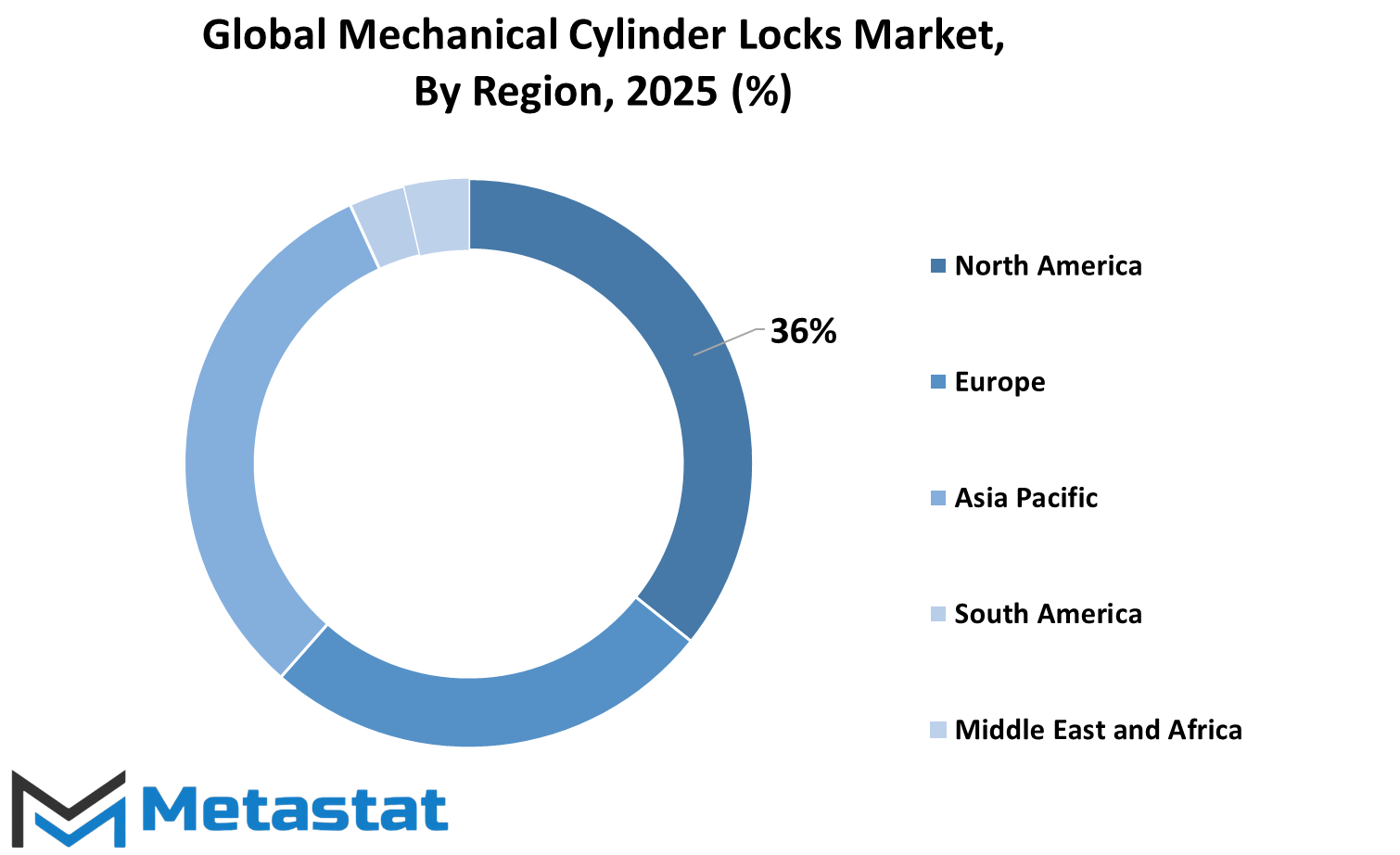
COMPETITIVE PLAYERS
The global mechanical cylinder locks market is growing steadily as security needs are on the increase in residential as well as commercial establishments. Mechanical cylinder locks continue to be among the most trusted and popular locking options, providing a combination of reliability, cost-effectiveness, and the simplicity of installation. Although digital and intelligent locking systems have been in the limelight, there are several still looking for mechanical locks due to their long lifespan and the feeling of security they ensure. These locks find common applications in residences, offices, public buildings, and factories since they do not need a power source and are less susceptible to failure during adverse conditions. The sleek and efficient design of these locks makes them a favorite among individuals looking for a reliable and easy-to-maintain lock.
Mechanical cylinder locks are also used by the replacements and upgrades demanded of existing old systems, specifically for older properties which have failed to adopt electronic security systems. Players in the Mechanical Cylinder Locks market are Assa Abloy, Allegion, Dormakaba, DOM Security, Kwikset, Medeco, Mul-T-Lock, CISA, Abloy, Yale, Schlage, Salto Systems, CES Group, Evva, Winkhaus, and Godrej & Boyce. These businesses specialize in enhancing lock performance, reinforcing physical security characteristics, and providing multiple models for varying requirements and price points. Their attempt to innovate without disrupting the fundamental mechanical makeup of locks makes them still competitive even in a market gradually turning toward automation.
A few variables such as urbanization, population increase, and increased worries regarding safety are fueling the market's growth. Mechanical cylinder locks are often viewed as the first line of defense against access by unauthorized parties. A large number of users find security in the audible feel of a turning key and the distinct sense of a door locking securely. It's not merely for securing an area; it's also for the sense of security it brings. While material and design innovation continues, the fundamental purpose of the lock is not changing protection of property and security.
Even as technology advances, mechanical locks aren't going away. Rather, they are evolving and being modified without diminishing their original intent. This industry should continue to perform well, particularly among consumers who value reliability and uncomplicated functionality within their security options.
Mechanical Cylinder Locks Market Key Segments:
By Type
- Single Cylinder Locks
- Double Cylinder Locks
- Thumbturn Cylinder Locks
- Keyless Cylinder Locks
By Material
- Brass
- Steel
- Aluminum
- Others
By Application
- Residential
- Commercial
- Industrial
- Institutional
By End-User
- Individual Consumers
- Builders and Contractors
- Security Firms
- Government and Military
Key Global Mechanical Cylinder Locks Industry Players
- Assa Abloy
- Allegion
- Dormakaba
- DOM Security
- Kwikset
- Medeco
- Mul-T-Lock
- CISA
- Abloy
- Yale
- Schlage
- Salto Systems
- CES Group
- Evva
- Winkhaus
- Godrej & Boyce
WHAT REPORT PROVIDES
- Full in-depth analysis of the parent Industry
- Important changes in market and its dynamics
- Segmentation details of the market
- Former, on-going, and projected market analysis in terms of volume and value
- Assessment of niche industry developments
- Market share analysis
- Key strategies of major players
- Emerging segments and regional growth potential



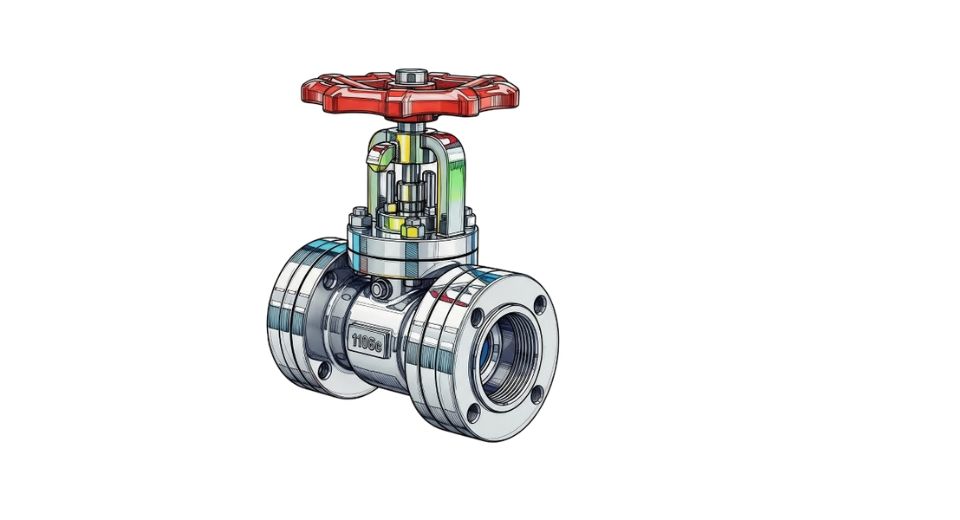
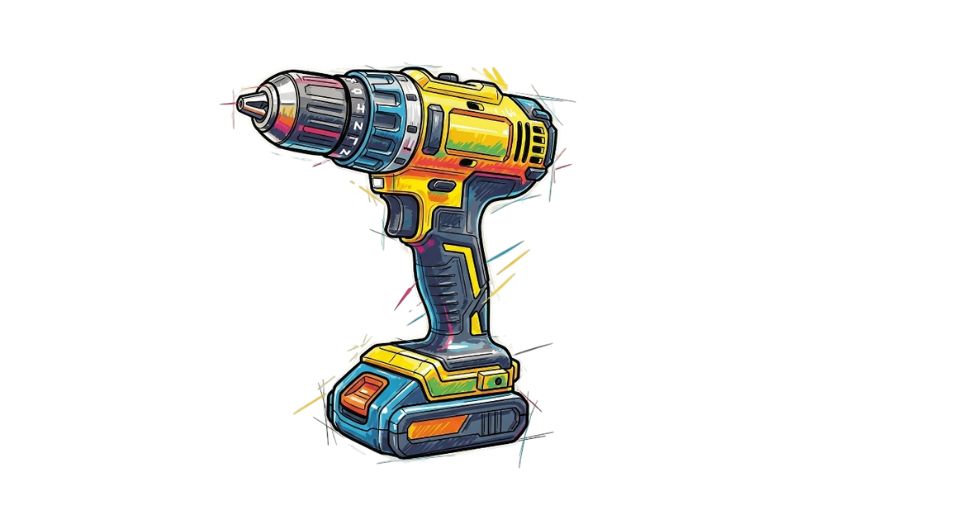
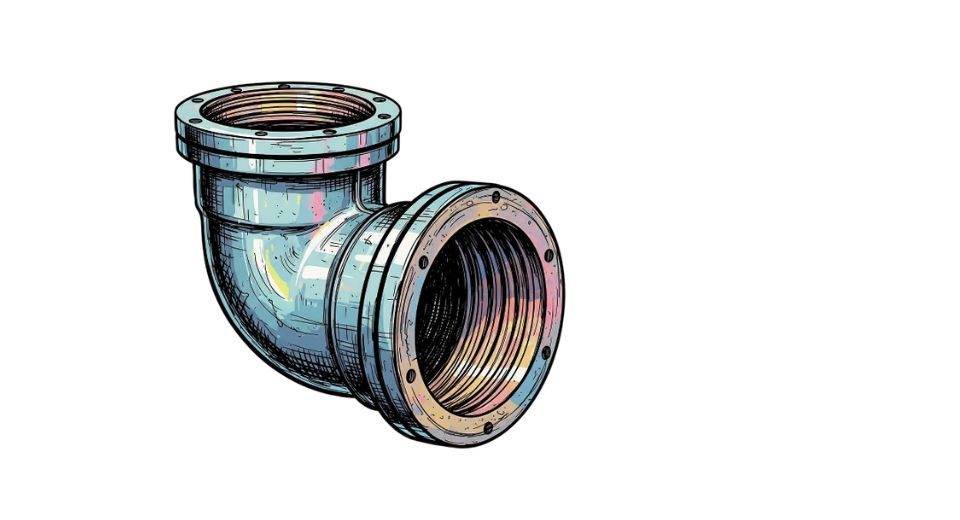
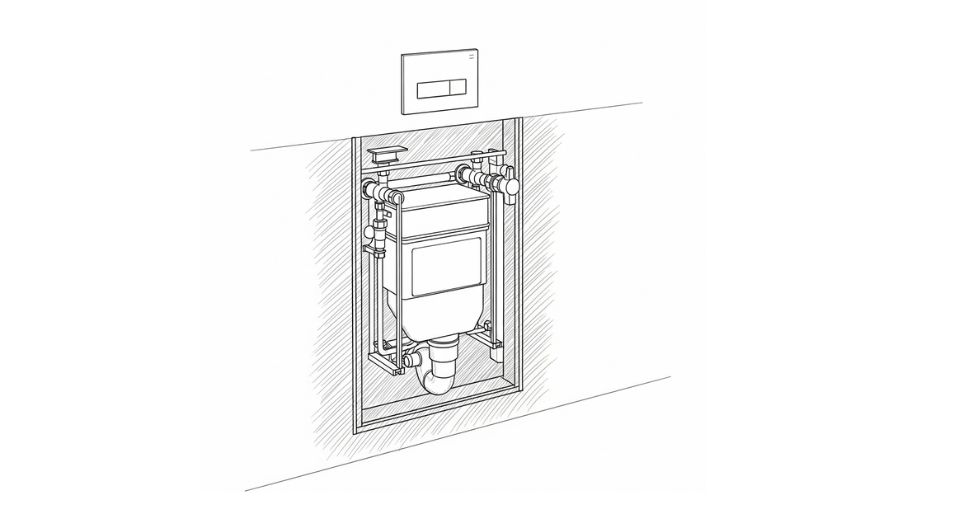

 US: +1 3023308252
US: +1 3023308252






